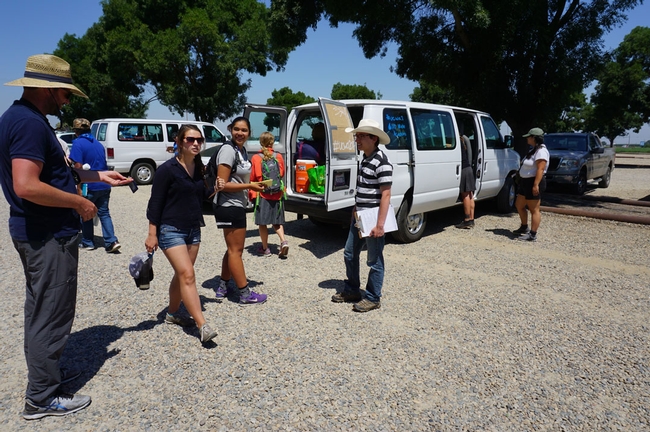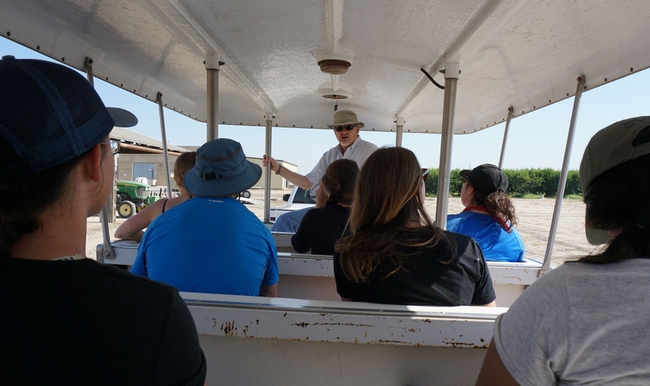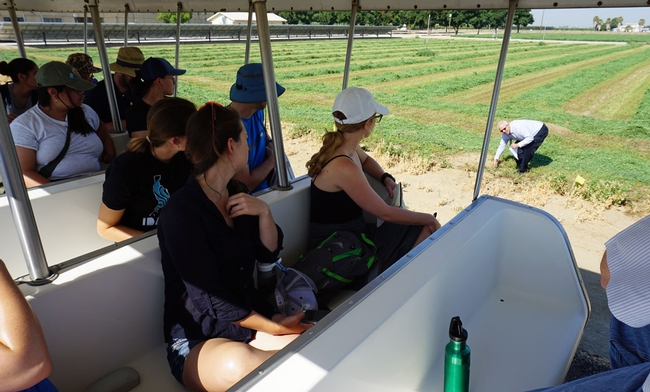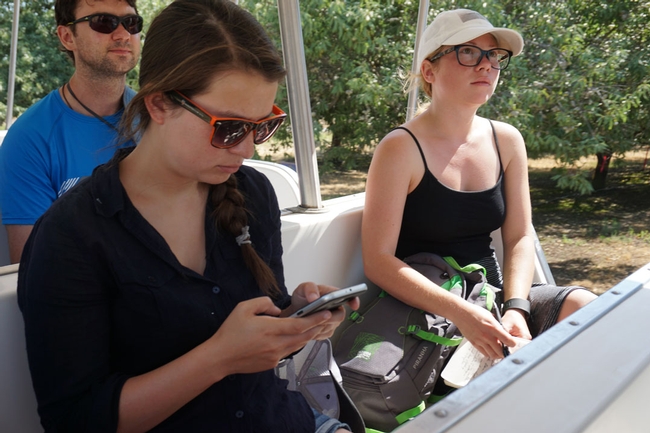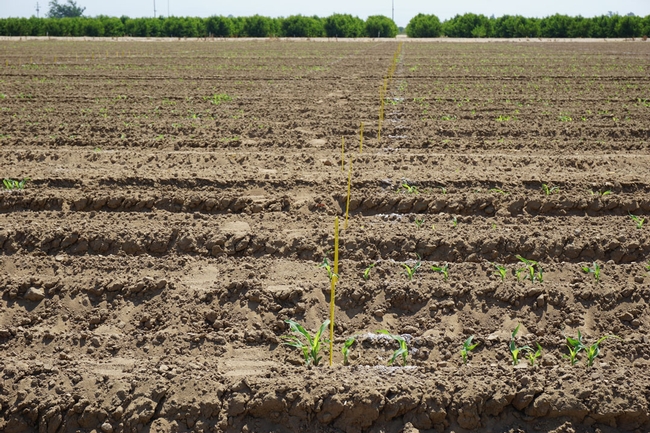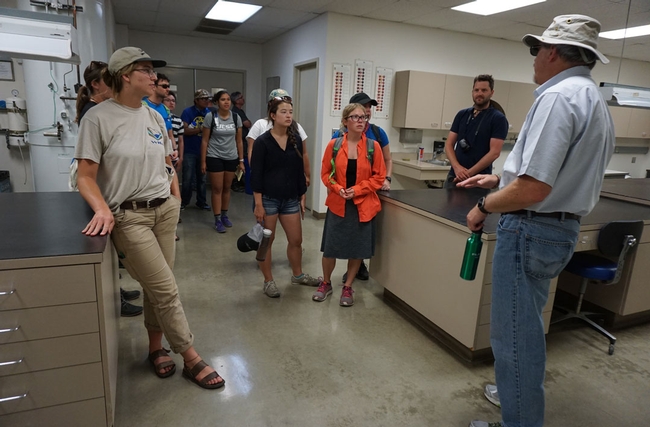University of California students are taking a long journey through California to trace the state's complicated and critical water supply. The recent graduates and upper-division co-eds from UC Merced, UC Santa Cruz, UC Berkeley and UC Davis are part of the UC Water Academy, a course that combines online training with a two-week field trip for first-hand knowledge about California water.
The tour began June 18 at Lake Shasta, the state's largest reservoir, and followed the water's course to the Sacramento Valley, through the Sacramento-San Joaquin Delta and south along the Delta-Mendota Canal. Since a key water destination is agriculture, the UC Water Academy toured the UC Kearney Agricultural Research and Extension June 23, where research is underway to determine how the state's water supply can be most efficiently transformed into a food supply for Americans.
“You're visiting a place ideal for growing high-quality fruits and vegetables, because of the Mediterranean climate and low insect and disease pressure,” said Jeff Dahlberg, director of the UC KREC.
UC Cooperative Extension water management specialist Khaled Bali joined the students next to his alfalfa research plot, where different irrigation regimens are compared to determine the maximum yield that can be harvested with the minimum amount of water.
“It used to be that the No. 1 objective was to maximize yield,” Bali said. “But with the limited supplies and the cost of water, now the No. 1 objective is to get the maximum economic return. Growers might be better off selling some of their water to other jurisdictions.”
A water tour wouldn't be complete without an introduction to drought research. A recently planted sorghum trial provided the backdrop.
“California is a great place to study drought tolerance,” Dahlberg said, “because you can induce a drought by withholding irrigation.”
The sizable field contains 1,800 plots with 600 sorghum cultivars under three irrigation schemes: one irrigated as usual, one in which water is cut off before the plants flower, and the final one where water is cut off after the plants flower.
“Every week, a drone flies over to collect data on the leaf area, plant height and biomass,” Dalberg said. “Hopefully we will get associations with gene expression and this phenotype data."
Dahlberg and his collaborating researchers believe identifying the genes responsible for drought tolerance in sorghum will help scientists find drought-tolerant genes in other cereal crops – such as wheat, corn, rice and millet. “This will go a long way to feeding the people of the world,” he said.
There is still much to learn about sorghum drought tolerance – is it conferred by the plant's waxy leaves, the way stomata are controlled, accumulation of sugar in the leaves, or a mechanism in the roots?
“These are all questions you will have to answer to feed the world,” Dahlberg said. “That's why I would encourage you to continue studying water. There's a lot for you to get into.”
A third-year earth science student at UC Santa Cruz and a member of the academy, Denise Payan, said the sense of responsibility for the future is not daunting, but encouraging.
“It makes me feel like I can make a difference,” she said. The tour through California is shaping her plans for the future, which may include a career at the intersection of geology and biology.
“This has opened my eyes to a lot of issues,” she said.
The next stop for the UC Water Academy is the vast Tulare Lake basin to learn about groundwater recharge before heading east to the Owens Valley and the shores of Mono Lake. From there the academy turns to the Sierra Nevada to visit San Francisco's water supply, which is collected by Hetch Hetchy Dam. The field trip ends with a two-day rafting trip on the American River.
The UC Water Academy is offered through UC Water and led by UC Merced professor Joshua Viers and UC Cooperative Extension water management specialist Ted Grantham. In addition to the two-week tour, students participated in weekly online meetings and complete a project on communicating California water issues to public stakeholders. Students receive 1 unit of academic credit.
